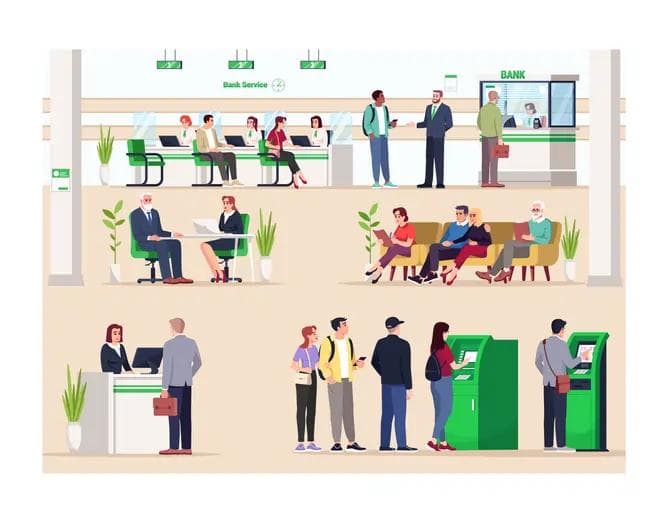The Future of Cash: Is a Cashless Society Inevitable?
The Future of Cash: Is a Cashless Society Inevitable?
Published by Jessica Weisman-Pitts
Posted on March 5, 2025

Published by Jessica Weisman-Pitts
Posted on March 5, 2025

Cash has long been the foundation of global commerce, but its dominance is no longer guaranteed in an era of rapid digital acceleration. Around the world, mobile payments, digital wallets, and contactless transactions are transforming how people and businesses exchange money. With governments and financial institutions driving digital innovation, the question is no longer if a cashless future is coming—but how quickly it will arrive and what challenges lie ahead.
Digital wallets are reshaping the way consumers and businesses transact. According to Juniper Research, the number of digital wallet users worldwide is projected to surge from 4.3 billion in 2024 to 5.8 billion by 2029, marking a significant 35% increase. This growth underscores the accelerating shift towards cashless transactions.
This trend is particularly evident in high-growth markets, where e-commerce expansion and government-backed initiatives are accelerating the adoption of digital payments. In Latin America and Asia-Pacific, digital wallets are becoming the preferred payment method, reshaping financial ecosystems and reducing reliance on physical cash. Additionally, central banks are exploring digital currencies (CBDCs) to complement—or potentially replace—traditional cash systems.
As digital payment networks expand, a critical challenge emerges: how will financial systems balance innovation, security, and accessibility in a rapidly digitizing world?
Digital Wallets: The New Normal in Payments
Once a niche technology, digital wallets have rapidly become the preferred payment method for millions globally, altering the commerce landscape. Mobile payment options are becoming more integrated into daily life as consumer preferences shift towards seamless digital transactions.
In the U.S., the preference for digital wallets over traditional payment methods is on the rise. Capital One reports that 53% of Americans now favor digital wallets, with 64% using them as frequently as cash or physical cards.
Globally, the trend is even more pronounced in high-growth markets. The Global Payments Report highlights digital wallets as the fastest-growing payment method in Latin America, already accounting for 21% of regional e-commerce transactions in 2023.
As digital wallets become integral to global financial systems, the question of whether they will entirely replace cash or if a hybrid payment system will persist becomes more urgent. The potential for a cashless future is a significant consideration for all stakeholders in the financial industry.
Why Digital Wallets Are Taking Over
With digital wallets on the rise, what’s driving this shift? A combination of convenience, security, and financial technology advancements is fueling their momentum. Consumers increasingly favor the ability to make payments with a simple tap or scan, eliminating the need for physical cash or cards. Digital wallets are also becoming more deeply integrated into e-commerce and retail transactions, streamlining the payment process across industries.
At the same time, Central Bank Digital c=Currencies (CBDCs) are influencing this shift. According to the Atlantic Council, 134 countries, representing 98% of global GDP, are now exploring CBDCs, signaling a move toward mainstream adoption of digital currencies. Additionally, as mobile banking infrastructure expands, consumers are transitioning away from cash in favor of digital alternatives that provide instant access to funds and secure payment options.
How Digital Wallets Are Expanding Worldwide
While digital wallets are gaining traction worldwide, adoption rates vary significantly by region. In Sweden, where less than 10% of transactions involve cash, some retailers no longer accept physical money, accelerating the transition to a nearly cashless society. Meanwhile, China is leading the charge in mobile payments, with 969 million active users as of mid-2024. In 2023, mobile payments accounted for 73.2% of consumer transactions, making cash an increasingly rare form of payment. These two economies illustrate how different regions are embracing digital payments at varying speeds, driven by government policies, consumer behavior, and financial infrastructure.
In Asia-Pacific, digital wallets continue to grow as government-led initiatives expand cashless infrastructure. Countries like Singapore have promoted cashless adoption through targeted programs, such as Hawkers Go Digital, while Thailand has introduced a digital wallet stimulus scheme to drive digital transactions. Additionally, several regional governments are strengthening cashless ecosystems through policy reforms and infrastructure expansion. By 2025, SilkPay predicts that digital wallets will account for over 40% of global e-commerce transactions.
Are Security Concerns Slowing Digital Wallet Adoption?
Despite their advantages, digital wallets are not without risks. Cybersecurity threats, including financial fraud, identity theft, and data breaches, remain pressing concerns. With digital wallets storing sensitive financial information, hackers continuously seek vulnerabilities to exploit.
To address these issues, financial institutions and payment providers are investing heavily in AI-driven fraud detection, biometric authentication, and real-time transaction monitoring. Regulatory frameworks such as Europe’s PSD2 directive, Know Your Customer (KYC), and Anti-Money Laundering (AML) regulations reinforce security standards worldwide.
Consumers also play a role in safeguarding their digital wallets. Cybersecurity experts at Kaspersky warn that weak passwords, phishing scams, and unsecured public Wi-Fi usage are significant risks. Users are encouraged to enable two-factor authentication (2FA) and regularly monitor their accounts for suspicious activity.
Will Cash Survive in a Digital World?
Although digital wallets are transforming the way payments are made, cash is unlikely to disappear entirely in the near future. Cash remains essential for financial inclusion for unbanked and underbanked populations, particularly in rural and developing areas. Unlike digital payments, cash transactions remain untraceable, offering anonymity valued by consumers wary of surveillance or data tracking. Additionally, cash serves as a backup during power outages, cyberattacks, or natural disasters when digital payment systems might fail.
While Sweden is rapidly moving toward a near-cashless society, other countries such as Germany and Japan continue to prioritize cash usage due to economic stability and consumer preference.
Blending Cash & Digital: The Future of PaymentsThe trajectory of digital payments suggests a gradual transition rather than an immediate disappearance of cash. Research from PYMNTS indicates that 86% of consumers across major economies are now familiar with digital wallets, yet many consumers continue to use a mix of digital and traditional payment methods.
To support this evolving landscape, regulatory bodies are exploring ways to ensure digital payments remain accessible and inclusive. The European Central Bank, for example, is actively assessing how a digital euro could complement cash while ensuring financial inclusion for those who may struggle to adapt to fully digital transactions.
As digital wallets evolve, ensuring accessibility, security, and inclusivity will be critical to their long-term success. Emerging technologies like blockchain-based payments, decentralized finance (DeFi), and next-generation near-field communication (NFC) innovations will further shape the financial landscape. Financial institutions, technology providers, and regulators must collaborate to build resilient digital ecosystems that adapt to evolving consumer needs.
The real question isn’t just whether cash will disappear but how businesses, consumers, and financial institutions will navigate a world where digital and traditional payments must coexist.
t.
Explore more articles in the Banking category











